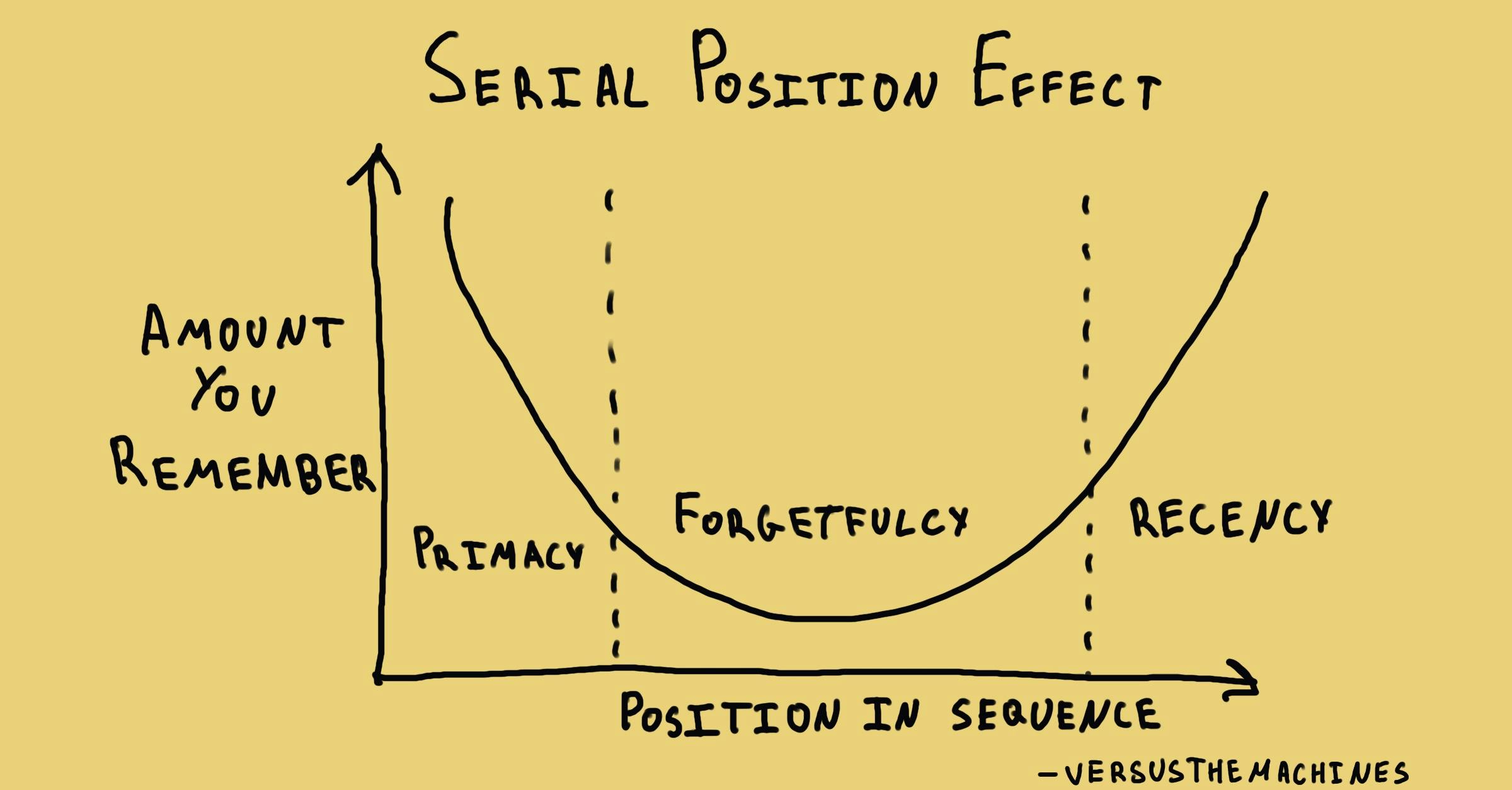Why do we better remember items at the beginning or end of a list?
Serial Position Effect
, explained.What is the Serial Position Effect?
The serial position effect describes how our memory is affected by the position of information in a sequence. It suggests that we best remember the first and last items in a series and find it hard to remember the middle items.

Where this bias occurs
The serial position effect impacts memory recall most obviously for lists. Imagine that your partner calls you to ask you to pick up some food at the grocery store on your way home. They ask you to get bananas, apples, bread, chicken, white rice, broccoli, and crackers.
When you get to the grocery store, you can’t remember everything that your partner listed. You only recall that they wanted you to get bananas, apples, broccoli, and crackers.
In this scenario, the serial position effect has impacted your memory. You can only think of the first and last couple of items on your partner’s list, but not the items in the middle.
Debias Your Organization
Most of us work & live in environments that aren’t optimized for solid decision-making. We work with organizations of all kinds to identify sources of cognitive bias & develop tailored solutions.














